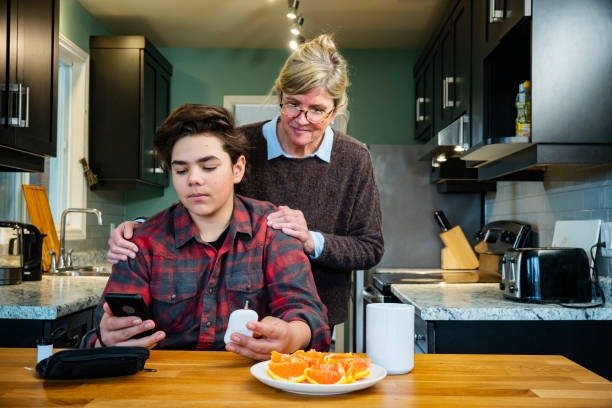How To Limit Your Teen’s Screen Time

Source:https://www.parents.com/
Many teenagers would spend nearly all their waking hours on screens without adult supervision, with high average screen times reflecting this. While technology is integral to their education and social lives, excessive screen time can have negative consequences. It’s important to implement strategies to limit your teen’s screen use, which can benefit the entire family.
Before the COVID-19 pandemic, children aged 8 to 12 averaged four to six hours of screen time per day, and teens up to nine hours, totaling over 3,000 hours annually. Post-pandemic studies indicate that screen time for tweens and teens increased by about one hour daily during lockdowns and has not significantly decreased since. This is well above the recommended “moderate” use of one to four hours per day, highlighting a significant need for improvement in managing screen time.
Why Too Much Screen Time Is Harmful
Excessive screen time is associated with various issues, including increased risk of obesity, disrupted social and family interactions, and negative impacts on mental health. However, a study published in JAMA Pediatrics found that parental monitoring of media use can positively affect a child’s academic performance and overall development. Setting screen time limits and preparing for potential resistance from teens is beneficial for their well-being.
Tips for Limiting Your Teen’s Screen Time
Parents can significantly impact their children’s screen use by implementing effective strategies. Since each teen is unique, not all approaches will work universally, but there are various tips available that can help set and enforce healthy screen time boundaries.
Make screen time a privilege: Screen time has shifted from a privilege to something seen as a right, with more screens available around the clock. Parents face increased pressure to manage screen use. It’s important to treat screen time as a privilege that must be earned, teaching teens to delay gratification and manage impulses. Establish clear rules and expectations, such as completing homework and chores before using screens, and ensure teens understand the consequences for not adhering to these rules.
Model healthy habits: Establishing household-wide screen time limits is more effective than individual rules. It’s important to model good behavior by limiting your own screen time. Teens are more likely to follow rules if they see you making choices, like opting for reading over scrolling on your phone, and treating media as a privilege.
Discourage multitasking: Teens often believe they can effectively multitask, such as texting while doing homework or using social media during phone calls. However, multitasking can reduce productivity. It’s important to discourage this behavior and explain to your teen how multitasking actually impairs their ability to focus and be productive.
Establish clear rules: Most teens, particularly younger ones, may not be mature enough to use electronics freely. To ensure safety and good decision-making, set rules such as turning off screens by a certain time at night and designating bedrooms as no-screen zones.
Encourage physical activity: Encourage your teen to engage in regular physical activities like walking, playing sports, dancing, or doing yard work. Participating in family activities can make exercise more enjoyable and social. Regular physical activity helps reduce screen time and supports your teen’s physical, social, and emotional development.
Educate your teen on media: Media literacy is crucial for young people. Regularly discuss with your teen how advertisements and sponsored content can create misleading narratives to drive purchases and the risks of excessive violence exposure. Teach them to be critical and informed viewers.
Enforce screen-free mealtimes: Turn off the TV and avoid texting or web surfing during mealtimes. Use this time to engage in conversation and discuss your day, as family dinners are valuable for enhancing family connections and should not be disrupted by screens.
Schedule screen-free days: Occasionally implementing a family-wide screen-free day or a longer digital detox, like a week-long break twice a year, helps ensure everyone engages in non-electronic activities. Alongside individual activities, include screen-free family fun, such as board games or hikes, to reinforce quality time without electronics.
Hold family meetings: Hold a family meeting to discuss screen time rules and involve your teen in the conversation. Address issues and work together on solutions, emphasizing the goal of developing a healthy relationship with electronics. Ensure every family member has the chance to share their perspectives.
Be a team: Research indicates that conflicts between parents over screen time limits can lead to more conflict in their child’s relationships. Before establishing media limits for your teen, ensure you and your partner or co-parent are aligned and present a united front.
Non-Screen Activity Ideas for Teens
Some things your teen can do instead of looking at a screen include:
- Chat with parents or siblings
- Socialize with friends in person
- Read books
- Be creative and use their imagination
- Play outside and enjoy nature
- Do homework
- Do chores
- Get enough rest
Read More: https://childreninfobank.com/safebank/how-to-limit-your-teens-screen-time/
Image Source:https://www.gettyimages.co.nz/





